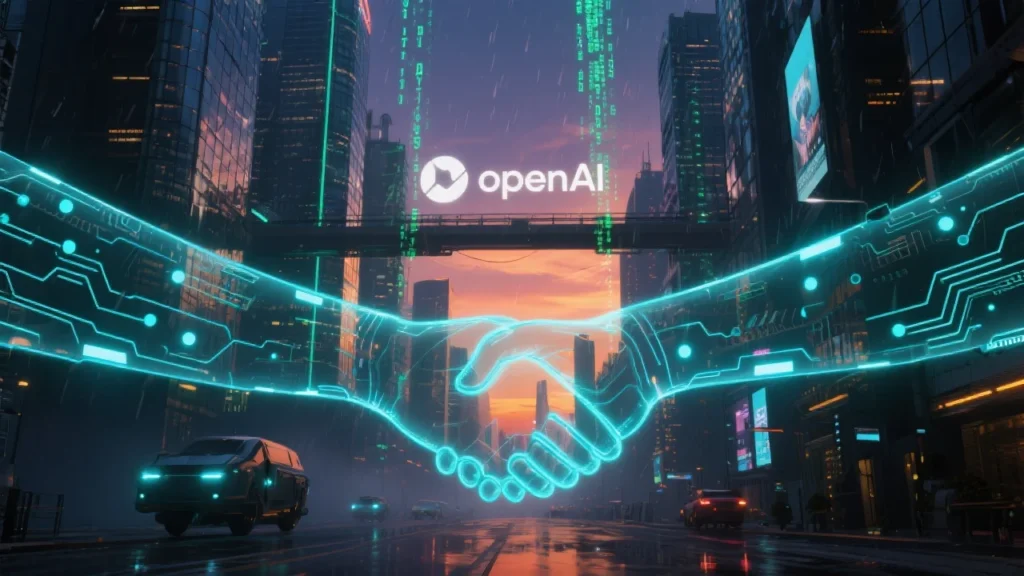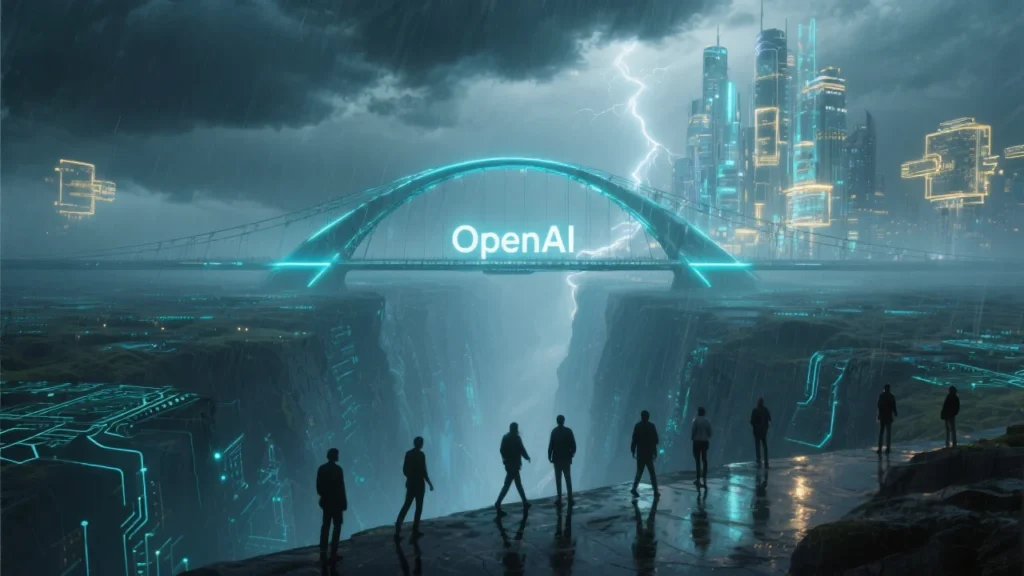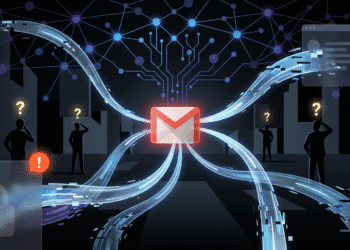The artificial intelligence industry just witnessed its most dramatic escalation in the ongoing talent war. OpenAI has announced unprecedented multimillion-dollar bonuses for employees, with reports indicating packages worth up to $1.5 million over two years. This bold move comes as CEO Sam Altman battles aggressive recruitment campaigns from Meta and other tech giants threatening to drain his company’s most valuable asset: its people.

The Announcement That Shocked Silicon Valley
The day before GPT-5’s highly anticipated launch, Sam Altman surprised his workforce with an unexpected message in the company’s internal Slack channel. His words were carefully chosen but carried massive financial implications.
“As we mentioned a few weeks ago, we have been looking at comp for our technical teams given the movement in the market,” Altman wrote, according to The Verge. He announced a “special one-time award” targeting researchers and software engineers across key divisions including applied engineering, scaling, and safety teams.
The timing wasn’t coincidental. This strategic announcement came as OpenAI prepared to unveil its most advanced AI model yet, but the real celebration wasn’t about technological breakthroughs it was about financial windfalls.
Breaking Down the Bonus Structure
The compensation packages vary significantly based on role and seniority levels. OpenAI’s most coveted researchers those already earning millions annually will receive bonuses in the mid-single-digit millions. Meanwhile, engineers can expect bonuses averaging hundreds of thousands of dollars.
What makes this particularly attractive is the flexible payout structure. Employees can receive their bonuses quarterly over two years, choosing between OpenAI stock, cash, or a combination of both. This approach gives workers immediate liquidity while maintaining long-term incentives.
Approximately 1,000 employees qualify for these bonuses, representing roughly one-third of OpenAI’s full-time workforce. However, this selective approach creates an interesting dynamic within the company, potentially breeding jealousy among those excluded from the “special” designation.
The Meta Factor: Zuckerberg’s Aggressive Campaign
The catalyst for OpenAI’s dramatic response can be traced directly to Meta CEO Mark Zuckerberg’s relentless pursuit of AI talent. Industry insiders describe his approach as “mafioso-style” poaching, with compensation packages reaching astronomical heights.
Meta has reportedly offered annual packages worth up to $20 million to lure researchers from OpenAI, Anthropic, and Alphabet. This aggressive strategy has already yielded significant results. Meta’s newly formed Superintelligence Labs successfully recruited seven OpenAI researchers, including Shengjia Zhao, one of ChatGPT’s original creators, who was recently named Meta’s chief scientist.
The psychological impact extends beyond mere numbers. OpenAI’s chief research officer, Mark Chen, has internally compared Zuckerberg’s recruitment tactics to a “home invasion,” highlighting the personal nature of this corporate warfare.
Beyond Meta: Multiple Fronts in the Talent War

While Meta dominates headlines, OpenAI faces threats from multiple directions. Elon Musk’s xAI has also launched aggressive recruitment campaigns, targeting OpenAI’s top performers with lucrative offers. The competition intensified further when former OpenAI CTO Mira Murati recently poached several technical leaders to help launch her rival lab, Thinking Machines.
This multi-front battle explains why Altman felt compelled to take such dramatic action. His internal messaging to employees emphasizes that “missionaries will beat mercenaries,” but he’s backing up that philosophy with mercenary-level compensation.
Financial Firepower: OpenAI’s War Chest
OpenAI’s ability to fund these massive bonuses stems from its remarkable financial trajectory. The company’s valuation has skyrocketed from $300 billion to a potential $500 billion in upcoming secondary stock sales a staggering 67% increase that provides substantial ammunition for retention efforts.
Recent funding rounds have been equally impressive. OpenAI raised $8.3 billion as part of a $40 billion funding round led by SoftBank Group Corp. This financial backing enables the company to compete aggressively without compromising its core operations.
Revenue growth supports these ambitious spending plans. OpenAI’s annual revenue surged from $10 billion in June to $13 billion currently, with projections exceeding $20 billion by year-end. The company now serves 700 million weekly ChatGPT users and has grown its paid business subscriber base to five million.
The Broader Industry Context
OpenAI’s bonus announcement occurs within a larger context of unprecedented AI infrastructure investment. The industry is experiencing a $250 billion spending surge through 2025-26, with major players committing massive resources to maintain competitive advantages.
Meta plans to spend nearly $100 billion by 2026 on AI initiatives. Alphabet raised its 2025 capital expenditure target to $85 billion, while Microsoft is on track to exceed $100 billion in annual AI spending. These figures illustrate the scale of investment driving current talent competition.
The Scarcity Problem
The fundamental challenge driving these astronomical compensation packages is talent scarcity. Industry estimates suggest only approximately 2,000 researchers globally possess the expertise necessary to build foundational AI models. This limited pool creates intense competition as companies race toward artificial general intelligence.
Tech entrepreneur Yuchen Jin, Co-founder and CTO of Hyperbolic, captured the market dynamics perfectly in his social media post that first revealed OpenAI’s bonus strategy. “My OpenAI friends are so hyped rn – not because it’s the night before GPT-5, but because Sam just announced $1.5M bonus for every employee over 2 years,” Jin wrote on X, according to Benzinga.
Jin’s additional observation that “78% of Nvidia employees are millionaires. At OpenAI, it’s 100%” highlights how AI companies are creating unprecedented wealth concentration among their technical workforce.
Strategic Implications and Market Response
OpenAI’s bonus strategy represents more than defensive maneuvering it’s a calculated offensive move designed to establish new industry standards. By offering these packages to all qualifying employees, including new hires, the company signals its commitment to maintaining talent superiority regardless of cost.
This approach contrasts sharply with traditional retention strategies that typically target only departing employees or specific high-risk individuals. OpenAI’s proactive stance demonstrates confidence in its financial position and long-term prospects.
The market has responded positively to these developments. Industry observers view the bonuses as evidence of OpenAI’s strong financial health and commitment to employee welfare, potentially attracting additional talent from competitors.
Challenges and Risks
However, this strategy carries significant risks. The selective nature of the bonuses could create internal tensions among employees who don’t qualify for the “special” designation. These workers contributed to OpenAI’s recent launches and ongoing success but find themselves excluded from the financial windfall.
Additionally, the massive financial commitment raises questions about sustainability. While OpenAI’s current revenue growth supports these expenditures, maintaining such compensation levels long-term requires continued business expansion and market dominance.
Looking Forward: The New Normal

OpenAI’s bonus announcement likely establishes a new baseline for AI industry compensation. Competitors will face pressure to match or exceed these packages to retain their own talent, potentially triggering an industry-wide escalation in compensation costs.
This development reflects the broader transformation of the technology sector, where AI capabilities increasingly determine competitive advantage. Companies unable to attract and retain top AI talent risk falling behind in the race toward artificial general intelligence.
The timing of Altman’s announcement coinciding with GPT-5’s launch demonstrates sophisticated strategic thinking. By combining technological advancement with financial generosity, OpenAI reinforces its position as the industry’s most attractive destination for AI researchers and engineers.
As the talent war intensifies, one thing remains clear: the battle for AI supremacy will be won not just through technological innovation, but through the ability to attract, retain, and motivate the brilliant minds capable of building the future. OpenAI’s multimillion-dollar bet on its people represents a defining moment in this ongoing struggle, setting new standards for how technology companies value their most precious resource human intelligence.










Comments 5